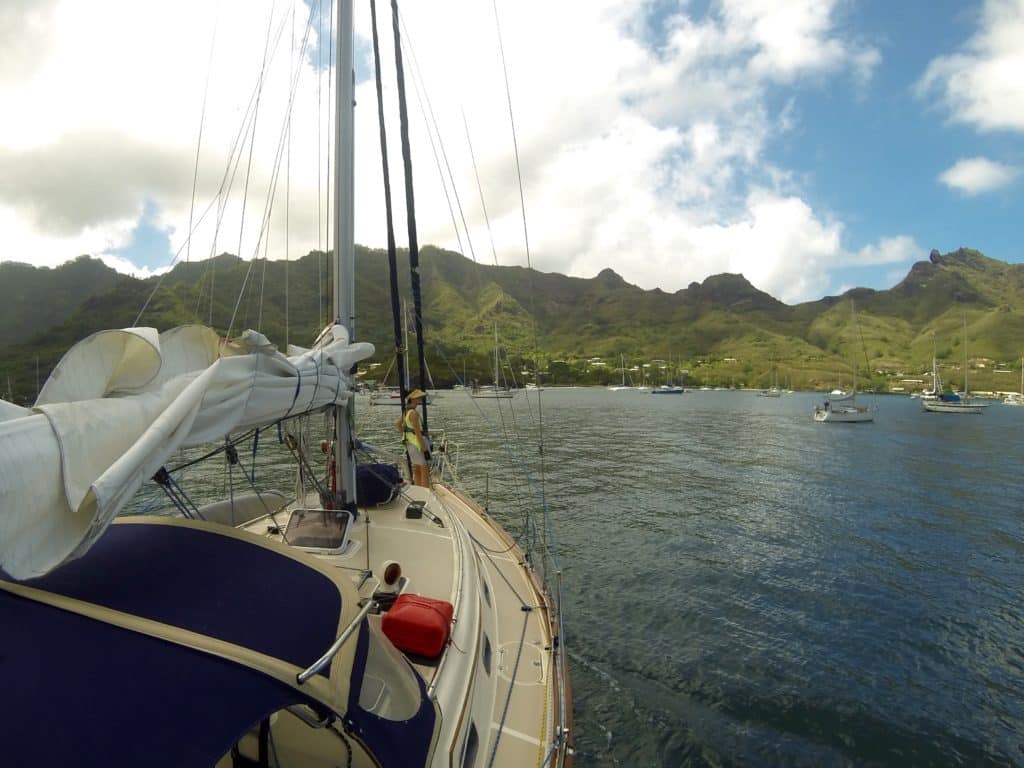
When sailing west from Mexico last April, my husband and I left all the comforts of a visible coastline in our wake — no more fish tacos, no more chandleries, no more boatyards a block away. We were on our own.
The first 16 days of our voyage across the Pacific to the Marquesas brought the myriad conditions ocean passagemaking is known for: 48-hour batches of 30-knot winds in 4-meter seas, doldrums and rabid squalls as we passed through the intertropical convergence zone, the temperamental region where weather systems from the Northern and Southern hemispheres collide.
We spent our days hunkered down below or clearing flying fish from the decks, watching as the sun cooked through the salt-crusted brightwork or bullet-size raindrops gave Helios, our Island Packet 380, a shower.
At 1122 on May 4, we passed 00° 00’. Crossing the equator was our last major waypoint before we made landfall. It’s also a huge milestone in the life of any sailor, a moment to honor the tenacity of the crew and the blessings of the gods that bring safe crossing.
My dad was kind enough to forward along some of the literature explaining the traditions associated with equator crossing to our satellite phone — the gist being that as long as there are imaginary lines circling the globe, there will be humans who celebrate sailing across them. The Vikings celebrated crossing the 30th parallel, and the Phoenicians celebrated passing through the Strait of Gibraltar.
Rituals vary, but involve shellbacks — experienced equator-crossing sailors — inflicting some gentle hazing on polliwogs, novice sailors crossing the line for the first time. Gentle hazing usually takes the form of supplication to the sea gods and ranking crew, and involves a saltwater shower.
We cobbled together our own ceremony, uncorking sparkling wine as the GPS, like a slot machine, flashed all zeros. We poured some for ourselves and some overboard as a libation to Neptune. We read a small passage from the Odyssey, ending with Odysseus’ prayer to Poseidon. We gathered coins from the United States, Mexico and Hong Kong and gave them up as offerings to the waves.
Having no more-experienced sailors on board, we took turns launching buckets full of seawater at each other, a refreshing turn considering the 80-degree water temperature — and a ritual we may need to continue as we pass lines of latitude going forward.
Quickly, we began to enjoy the benefits of being in the Southern Hemisphere: receiving a steady 15- to 20-knot easterly wind for 48 hours (our most consistent conditions yet!), leaving the squalls and their erratic conditions behind us and finding a friendly current, giving us an extra knot of speed as we crossed 1 degree south latitude. We grew bold enough to start calculating the distance to our arrival: After 2,200 nautical miles, only 750 to go.








